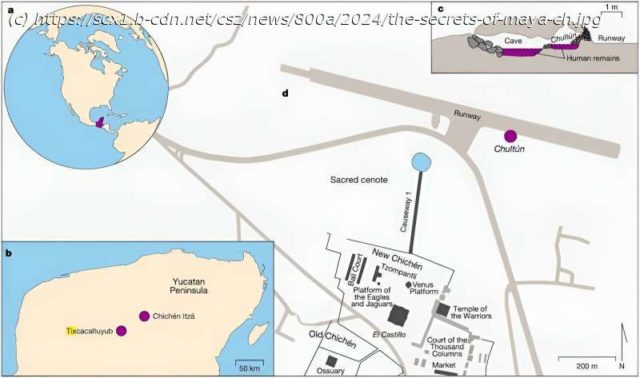After analyzing the remains of 64 ancient sacrificed individuals, most of whom were children, researchers have revealed new details about human sacrifice at the ancient Maya site of Chichén Itzá.
After analyzing the remains of 64 ancient sacrificed individuals, most of whom were children, researchers have revealed new details about human sacrifice at the ancient Maya site of Chichén Itzá.
Published in Nature, these results show that contrary to popular belief, every one of the ritually sacrificed individuals was male. Additionally, many of them were closely related, including two pairs of identical twins, evoking important themes of Mayan mythology.
These ancient genomes also show that despite European colonialism, the genetic legacy of the ancient Maya continues in today’s Indigenous people from the region.
The Maya civilization was a Mesoamerican culture on the Yucatán peninsula in Mexico. The city of Chichén Itzá emerged around 250 CE and ended in 1697 CE with the Spanish conquest of the region. It was one of the largest and most influential Mayan cities, and a political center of the civilization.
Today, Chichén Itzá is one of the most intensively studied archaeological sites in all of Mesoamerica. It contains two ceremonially important features. Most well-known is Chichén Itzá’s largest structure, El Castillo (also known as the Temple of Kukulkán).
Important, too, was the Sacred Cenote (also known as the Well of Sacrifice), a natural sinkhole leading to an underground water source. Dredging excavations since the early 1900s have recovered, among other things, golden artifacts and human skeletons from the bottom of the cenote.
During the 1967 construction of an airport runway 300 meters northeast of the Sacred Cenote, a chultún (a human-made cistern typically built for storing drinkable water) was discovered.
Home
United States
USA — IT Secrets of Maya child sacrifice at Chichén Itzá uncovered using ancient DNA






